Wakayama City Japan Photos
Wakayama is an historically important, relaxed Japanese city
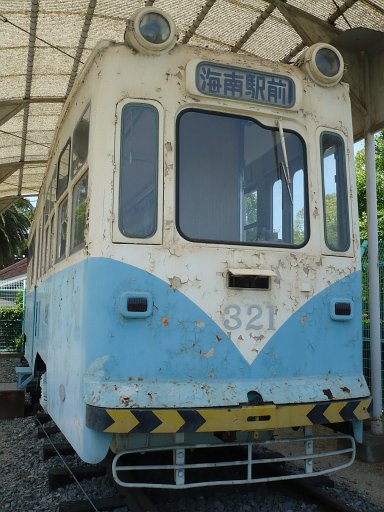
A city train sits in a park south east of Wakayama Castle. Buss Kerstetter mentioned streets cars in a letter to his wife in September 1945.
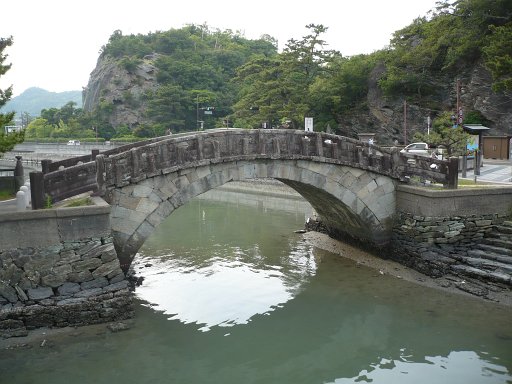
Furobashi is a famous bridge along an ancient trave route in the southern part of Wakayama City, near Wakaura Bay. It was constructed as a stone arch in the 1850s. The bridge looks much like it did upon its completion. Furobashi is open to foot traffic. The stone railings are carved.
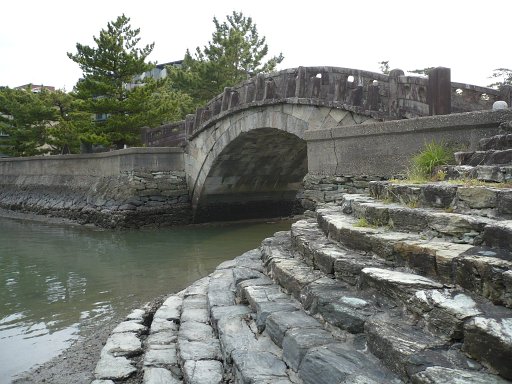
Another view of Furobashi.
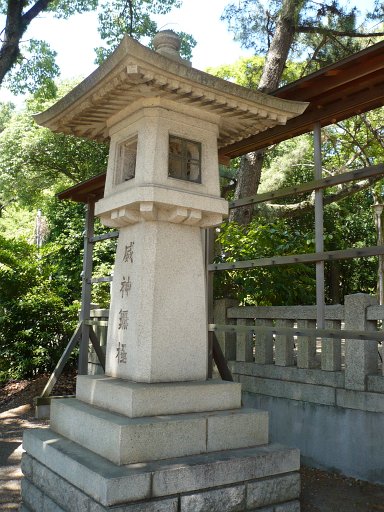
This tourou lantern is one of dozens on the grounds of the Wakayama Castle. The castle was one of the three family strongholds durin during the Tokugawa Shogunate. While stone lanterns originally served as votives and general lighting at religious sites, today many people use them as decorations in their private gardens.
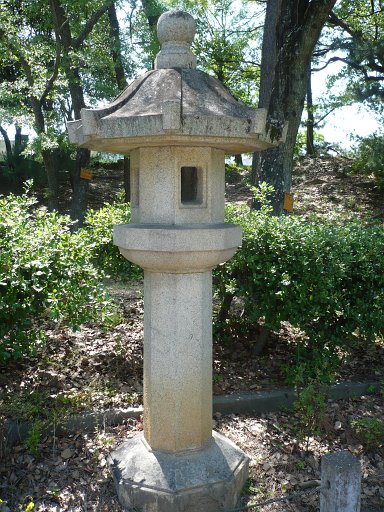
Japan imported the tourou lantern from China, along with Buddhism, in the sixth century. This lantern is one of dozens on the grounds of the Wakayama Castle overlooking Wakayama City, Japan.
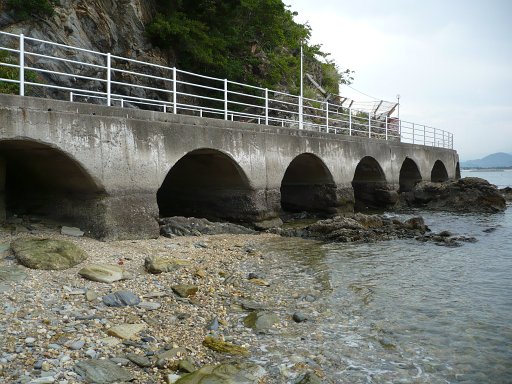
Manpa Hotel beach side walk, Wakaura, Wakayama City, Japan. The remains of the Manpa Hotel, one of three occupied by the US Navy when working in Wakayama, Japan to help repatriate British, English, French and US prisoners of war. The current Manpa Resort sits up top of the ruins.
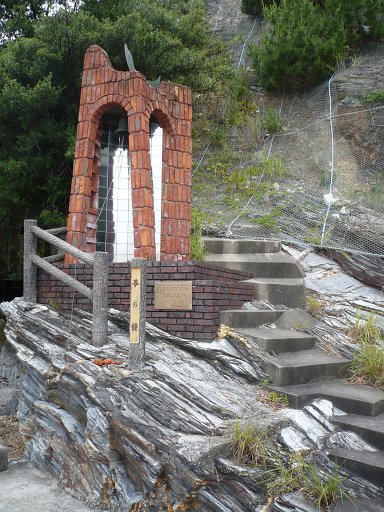
Manpa Hotel Remains, Wakaura, Wakayama City, Japan. The good luck bell is built from the remains of the Manpa Hotel, one of three occupied by the US Navy when working in Wakayama, Japan to help repatriate British, English, French and US prisoners of war. The current Manpa Resort sits up top of the ruins.
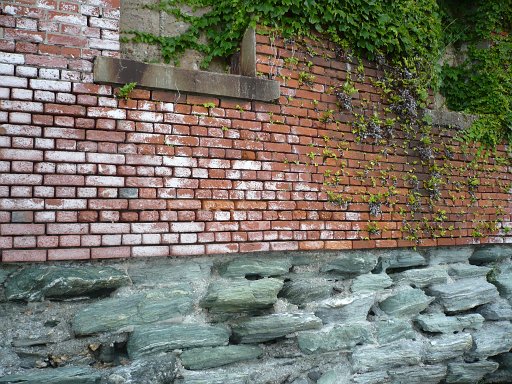
Manpa Hotel Remains, Wakaura, Wakayama City, Japan. The remains of the Manpa Hotel, one of three occupied by the US Navy when working in Wakayama, Japan to help repatriate British, English, French and US prisoners of war. The current Manpa Resort sits up top of the ruins.
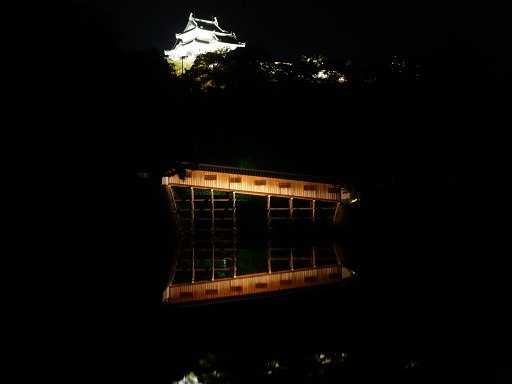
Ohashi Roka with Wakayama Castle. Wakayama Castle in Wakayama, Japan. Though partly destroyed by air raids during July 1945, the castle itself was never a target of the fire bombing.
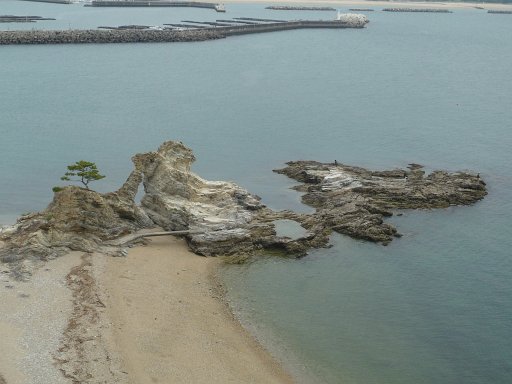
A trees grows atop this natural breakwater extending into Wakaura Bay, south of Wakayama City, Japan. Climbing up on the rocks reveals some wooden remains and rusted nails, indicating the tree may have been planted and cultivated by a Japanese gardener. Who else would so such as act of creativity while surrounded by saltwater.
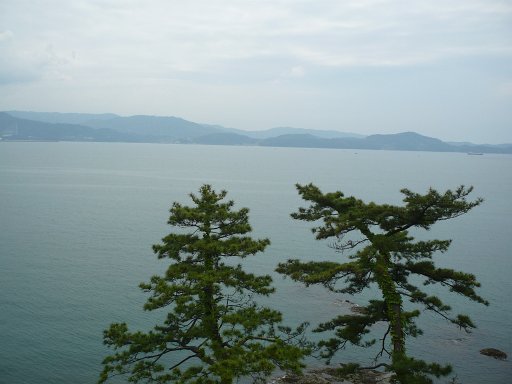
Evergreens extend over the cliffs dropping above Wakaura Bay south of Wakayama City, Japan.
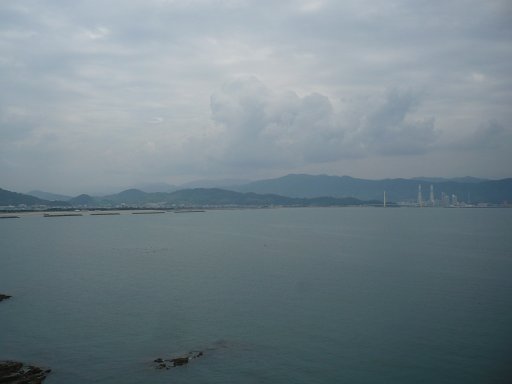
This photo almost duplicates one in the cruise book for the USS Montpelier, CL-57, Cleveland Class Cruiser. Shot without detailed knowledge of the 1945 photo, this picture created a stir among the old salts attending an annual reunion for Monty alumni. The only thing missing, they say, is the dock where POWs boarded shuttles for their trip to the hospital ships waiting for them in the bay. Also, the modern structures on the far side of Wakaura Bay are new.
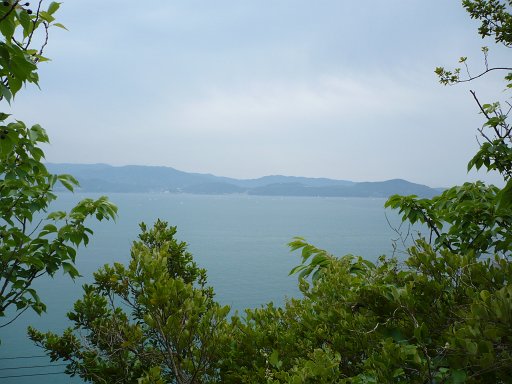
Bright green with plant life, the southern cliffs of Wakayama City, Japan, provide a beautiful view of Wakaura Bay. In letters sent home from Wakayama, U.S. Navy sailor Buss Kerstetter describes riding out the famous Makurazaki Typhoon in this bay while aboard the USS Montpelier, CL-57.
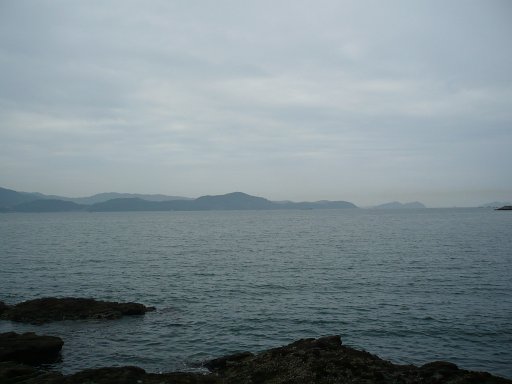
Shot from a partially manmade jetty along the eastern border of Wakaura Bay, Wakayama City, Japan, this photo looks toward the Pacific Ocean and the Inland Sea. The rock islands in the distance emit a sense of calm mystery. While the quiet waters may have been a relief for young sailor aboard the USS Montpelier CL-57 in September 1945, the famous Makurazaki Typhoon was on its way. One of the three most power storms during the era of Emperor Showa, this typhoon would last for two days and kill more than 2000 people. You can read about Wakayama and other Pacific War locales through the eyes of a firecontrolman serving onboard the Might Monty. His story is currently in production by Village Hiker Press as Buss, the Emperor and Jackie.
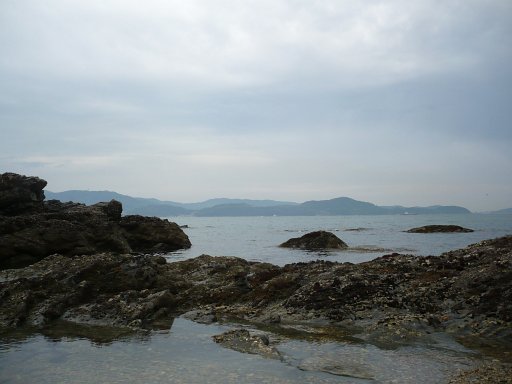
Beautifully sculptured rocks along the beach near the Manpa Resort frame a view of Wakaura Bay, Wakayama City, Japan. Although replaced by a modern resort today, you can still find along the beach the brick foundation remains of the original hotel. In September 1945, U.S. Navy Firecontrolman Buss Kerstetter wrote about the hotels on Wakaura Bay, including the requirement to remove shoes before entering. You can read his story in Buss, the Emperor and Jackie, currently in production by Village Hiker Press.
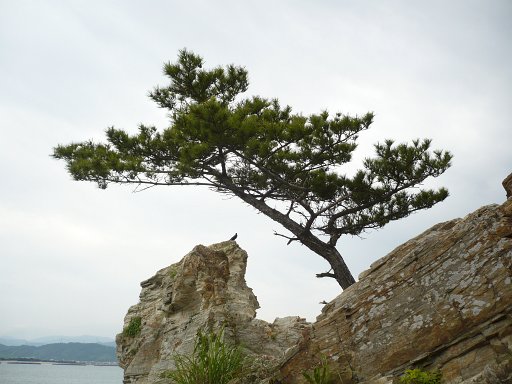
When you climb to the top of the rock to see this tree up close, you find the remains of a wood structure, plus some large rusted nails. So you ask, "Was this tree planted by God or by a human gardener?" Either way it nicely accents the beauty of Wakaura Bay, Wakayama City, Japan, appearing as a bonsai sculpted by God. The beauty of Wakayama City and the kindness of the people were topics he discussed when Buss Kerstetter wrote his wife from Wakayama in September 1945. Buss was a sailor from the USS Montpelier CL-57 in Wakayama after the end of the Pacific War. You can read his story in Buss, the Emperor and Jackie, currently in production by Village Hiker Press.
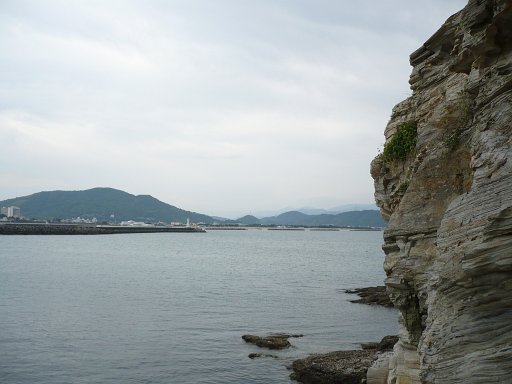
Wakaura Bay, Wakayama City, Japan. The USS Montpelier was anchored here in September 1945 as part of the effort to repatriate English, Dutch, French and US prisoners of war. You can read the story of one sailor and his shipmates in Buss, the Emperor and Jackie, currently in production by Village Hiker Press.
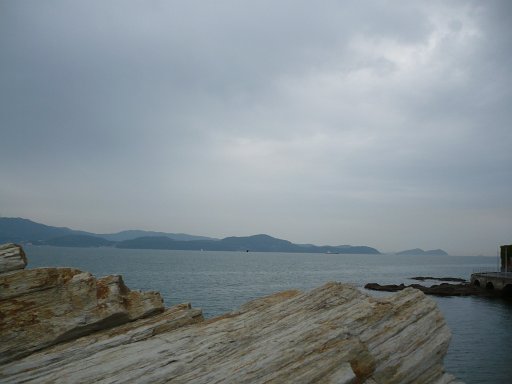
Beautifully sculpted rocks and calm waters make Wakaura Bay a pleasant refuge from the tensions of life. For centuries, the natural scenery and serenity of Wakaura Bay, Wakayama City, Japan, have attracted visitors and inspired poets. U.S. Navy sailor Buss Kerstetter was surprised by the beauty of this area, while being impressed by its people. He worked on ship and ashore for 10 days in September 1945 as part of a naval task force assigned to evacuate Allied POWs following the end of fighting in the Pacific War . You can read his story in Buss, the Emperor and Jackie, currently in production by Village Hiker Press.
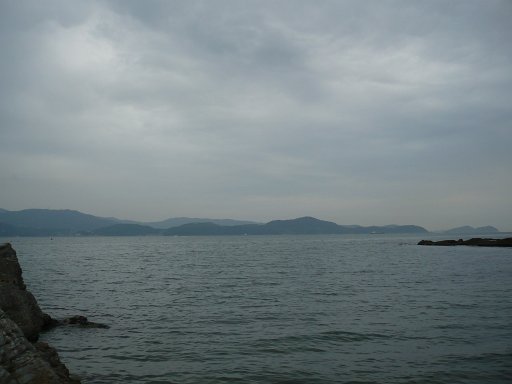
Wakaura Bay, Wakayama City, Japan. The USS Montpelier was anchored here in September 1945 as part of the effort to repatriate English, Dutch, French and US prisoners of war. You can read the story of one sailor and his shipmates in Buss, the Emperor and Jackie, currently in production by Village Hiker Press.
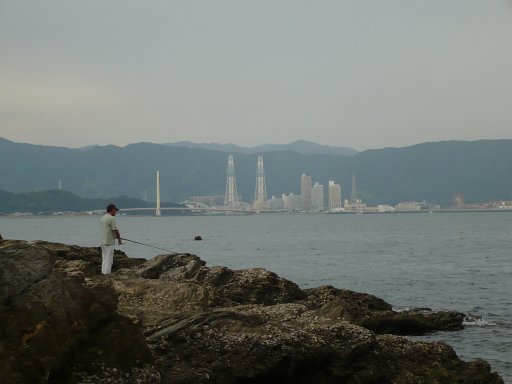
A man fishes from a natural stone jetty extending into Wakaura Bay, Wakayama City, Japan. Across the bay is Wakayama Marina City, with its theme park, fish market and hotels, all built on an artificial island in the bay. The USS Montpelier CL-57, a Cleveland Class Cruiser, was anchored here in September 1945 as part of peacemaking work following the end of the Pacific War. You can read the story of one sailor and his shipmates in Buss, the Emperor and Jackie, currently in production by Village Hiker Press.
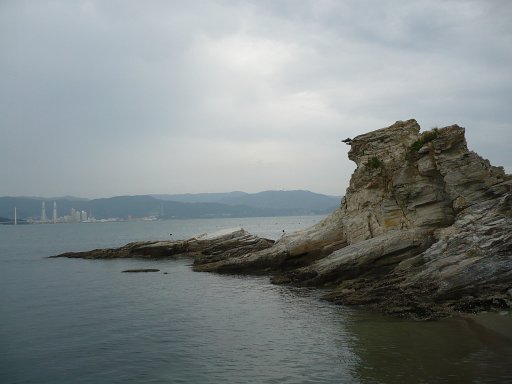
Across Wakaura Bay from Wakayama City is Marina City, home for a theme park, fish market, hotels and yacht club. Constructed on an artificial island in the bay, Marina City opened in 1994. It draws visitors from all over Japan and worldwide. For 10 days in September 1945, the USS Montpelier CL-57 was anchored here as part of the effort to repatriate Allied POWs following the end of the Pacific War. U.S. Sailor Buss Kerstetter and four friends went ashore as volunteers with this work. When told they were not needed the five men walked through the city. Buss recorded his observations for his wife, Jackie. Wakayama provided one of many turned points in his life as it showed him up close the industry and friendliness of the Japanese people. Previously he had mostly know them as skilled and deadly warriors. You can read the story of Buss and his shipmates in Buss, the Emperor and Jackie, currently in production by Village Hiker Press.
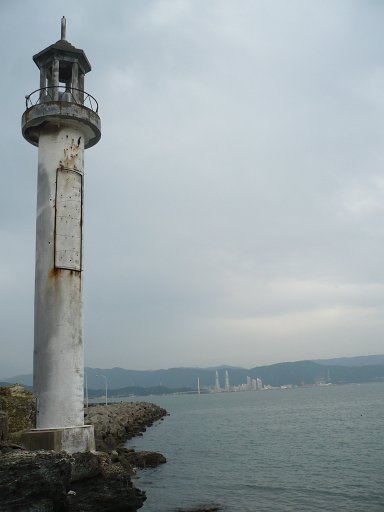
Created in the style of a tourou latern, this beacon may have lighted Wakaura Bay when visited by the USS Montpelier CL-57 in September 1945. On the far side of the bay today sits Wakayama Marina City, a theme park and market built on an artificial island. While Marina City is new, most of the Wakaura Bay is the same as it was in 1945 when Buss Kerstetter wrote home about the beauty of the city and the kindness of its people You can read the story of this U.S. Navy sailor in Buss, the Emperor and Jackie, currently in production by Village Hiker Press.
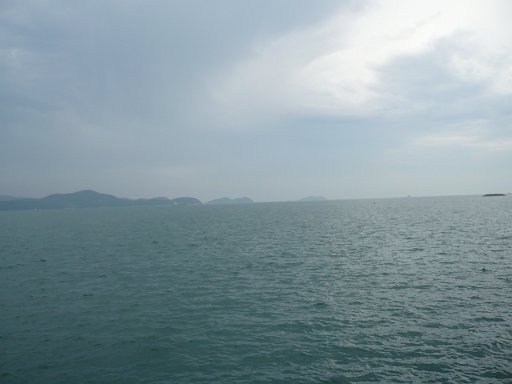
Looking west from their ship, the sailors aboard the USS Montpelier CL-57 would have seen the still waters and rock islands in and around Wakaura Bay, Wayakama City, Japan. A Cleveland Class Cruiser, the Montpelier was anchored here in September 1945 as part of the effort to repatriate Allied POWS after the end of the Pacific War. You can read their story as seem through the eyes of one sailor in Buss, the Emperor and Jackie, currently in production by Village Hiker Press.
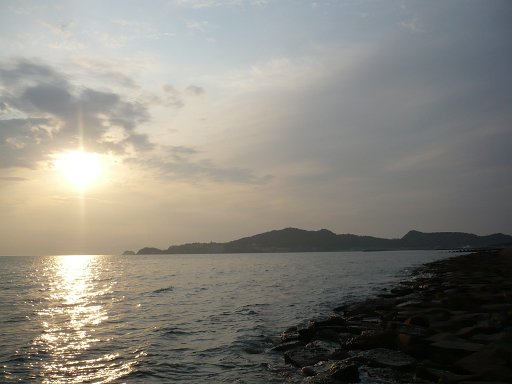
Viewed from Bandokoro Garden, the sun sets beautifully over Wakaura Bay, Wakayama City, Japan. Protected from erosion today by manmade masonry structures, the garden is located on a long and narrow peninsula pushing far out into Wakaura Bay. The beautiful sunset is typical of what you see on clear evenings along the beaches south of Wakayama city. U.S. Navy petty officer Buss Kerstetter wrote about the terraced cliffs of Wakayama. Along with four friends he walked through Wakayama in September 1945, following the end of WWII. You can read his story in Buss, the Emperor and Jackie, currently in production by Village Hiker Press.
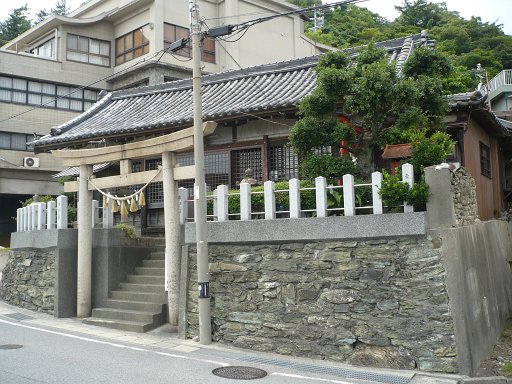
Stone walls in Wakayama Japan. Described in the writings of Buss Kerstetter to his wife Jackie in September 1945.
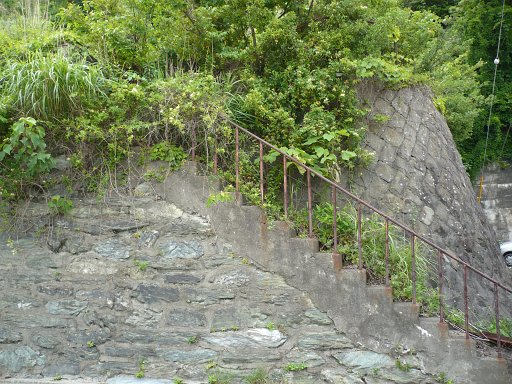
Stone walls in Wakayama Japan. Described in the writings of Buss Kerstetter to his wife Jackie in September 1945.
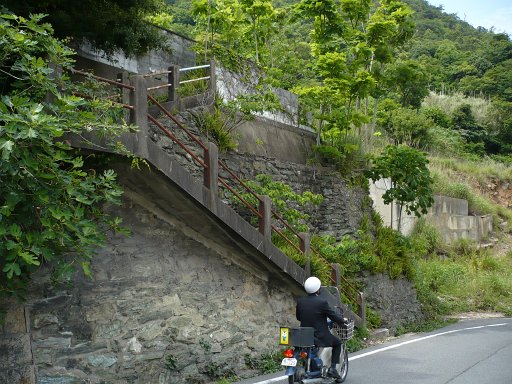
Stone walls in Wakayama Japan. Described in the writings of Buss Kerstetter to his wife Jackie in September 1945.
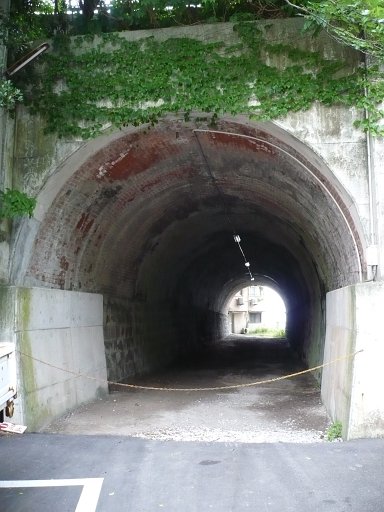
A Old Road Tunnel in Wakaura, Wakayama City, Japan. Although no longer is use, this road tunnel was operational in September 1945 when the crew of the USS Montpelier was in Wakayama Japan.
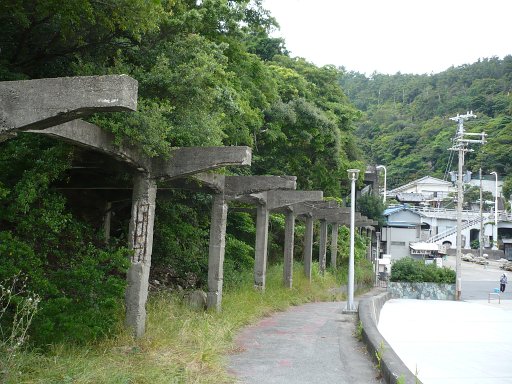
Wakaura, Wakayama City, Japan - 26. An old highway bridge in he Wakaura section of Wakayama, Japan. The bridge would have been in place in September 1945 when the crew of the USS Montpelier was in in Wakayama.
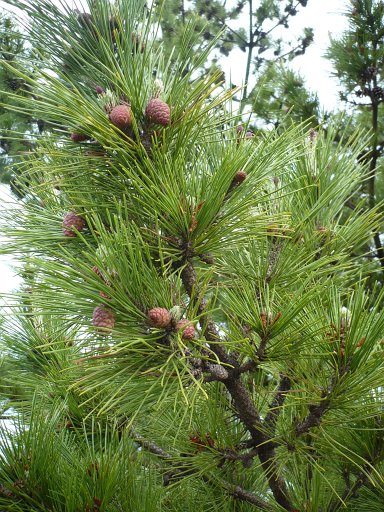
Pine trees captured the attention of Buss Kerstetter when he was in Wakayama City, Japan, in September 1945, following the end of World War II. Mr. Kerstetter was a third class fire control specialist serving on the USS Montpelier, CL-57, a Cleveland Class Light Cruiser. Because the ship was patrolling nearby in the East China Sea in the weeks prior to the end of the war, the Mighty Monty was ordered to Wakayama City to help in the repatriation of Allied prisoners of war. After Mr. Kerstetter and four friends volunteered for short duty, they were released from their tasks because there were too many workers, so they walked into the city. His story is currently in production by Village Hiker. The pines are important today as part of the natural beauty of Wakayama City, Japan.
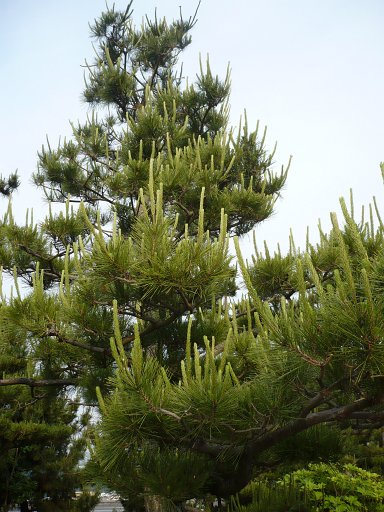
Wakaura, Wakayama City, Japan - 32. Pine trees mentioned in the letters of Buss Kerstetter while he was in Wakayama, Japan, September 1945.
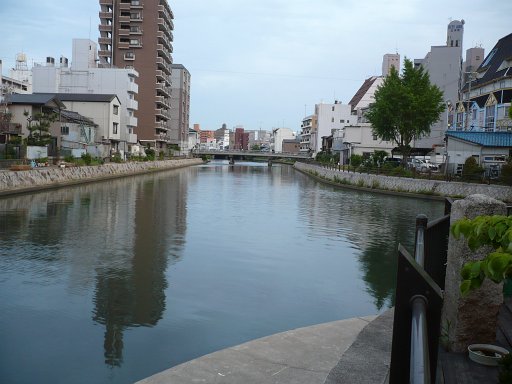
The Kino River—Kinokawa—runs through the northern part of Wakayama City, Japan. Wakayama City has long channeled some of its flow aa Kinokawa passes through to the Pacific Ocean. The headwaters of the Kinokawa start near Mount Ōdaigahara east and south of Wakayama City, in the Nara prefecture of Japan. The largest river in the Kii peninsula, Kinokawa is good for canoeing and kayaking.
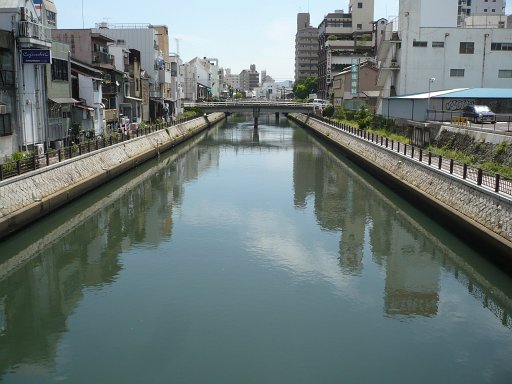
The shipping port of Wakayama City, Japan, is located on the western side of the Kii Peninsula where the Kino River—Kinokawa—meets the Pacific Ocean and the Inland Sea. This city of 375,000 channels some of the Kinokawa as it passes by, providing water transportation routes through the city. Because it was a manufacturing port, Wakayama City was targeted by Allied bombing during World War II, evenutally being attacked by incendiary bombs in July 1945. Today the economy includes steel and petrochemical plants. Wakayama City is quiet, clean, friendly and safe with a castle on a hill at its center.
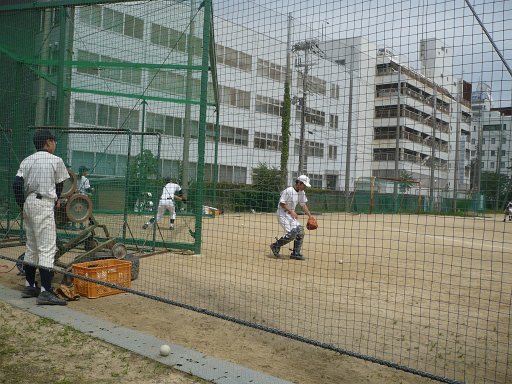
Japanese young people play baseball at a junior high school in the central part of Wakayama City, Japan. Introduced into Japan in 1872 by American Educator Horace Wilson, baseball is a very popular game throughout the country. Japan has a Baseball Hall of Fame with websites in Japanese and English. An English language website for fans of Japanese baseball is Japanese Baseball dot com. If you know of other websites covering baseball in Japan, please let us know and we will post them. We also would like to know about popular baseball websites for native speakers.
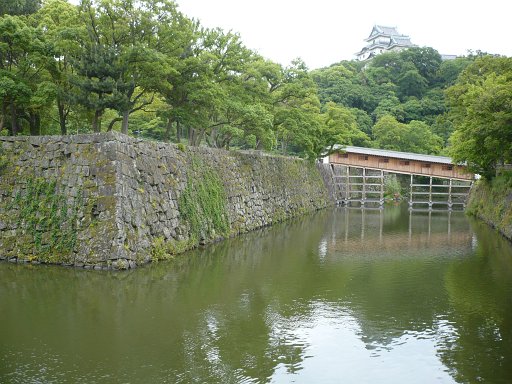
Ohashi Roka—or Ohashi Bridge—was a private connection across a moat protecting Wakayama Castle, located in Wakayama City, Japan. According to historical authorities in Wakayama City, the covered bridge helped safeguard the identities of people visiting the castle. The castle was constructed to help protect the interests of Toyotomi Hideyoshi as he worked to unite Japan in the 1580s. The bridge was added to Wakayama Castle in the early 1700s. Using historical records, the bridge was reconstructed in its current form in 2006. A slanted bridge of this type was very rare in Japan. Wakayama Castle is visible above the bridge.
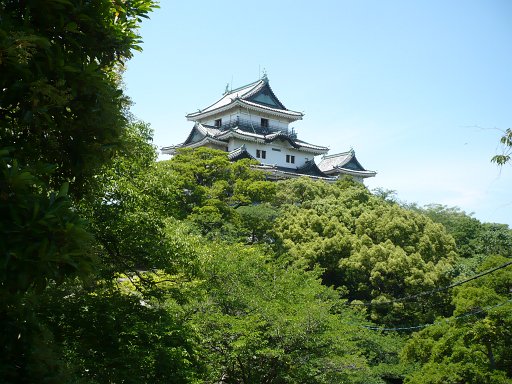
Constructed in the late 1500s by Toyotomi Hidenaga for this brother Toyotomi Hideyoshi, Wakayama Castle rises above Wakayama City, Japan. Working to unite Japan, Hideyoshi needed the castle to help protect his interests in the western part of the Honshu island. Over the years, several feudal lords ruled from the castle. After the Meiji government abolished feudalism in 1871, Wakayama Castle opened to the city. Though partly destroyed during air raids on Wakayama by the U.S. Army Air Corp in July 1945, the castle itself may not have been directly targeted by the fire bombing as indicated by a locally available map showing the damaged areas of the city. During the 1950s, the people of Wakayama City rebuilt the castle out of fire resistant concrete and cement. Today the castle continues to watch over Wakayama City. The park surrounding Wakayama Castle is very popular with local residents and visitors. <--Although not completely verifiable, research indicates Buss Kerstetter and four friends saw the castle while in Wakayama City in September 1945 after going ashore to help repatriate British, Dutch, French and American POWs. His story of love, war and compassion for his enemy—Buss, the Emperor and Jackie—is currently in production by Village Hiker Press.-->
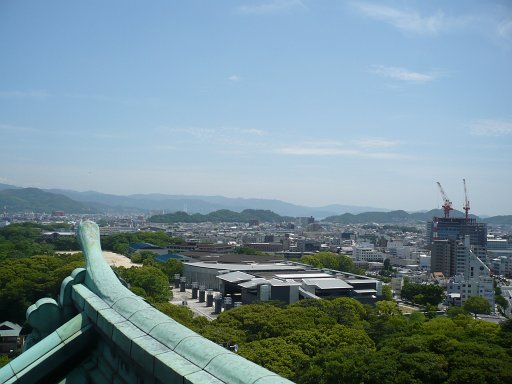
The tower at Wakayama Castle provides a clear view toward the south. The distant hills are beyond Wakaura Bay where the USS Montpelier CL-57 anchored in September 1945. During its 10-day stay in the Wakayama area, the Cleveland Class Cruiser rode out a typhoon with winds exceeding 100 miles an hour or 160 kilometers an hour. The typhoon beached a U.S. Navy minesweeper and killed more people in Wakayama City than died in the city during the July 1945 fire bomb air raids by the U.S. Army Air Corp.
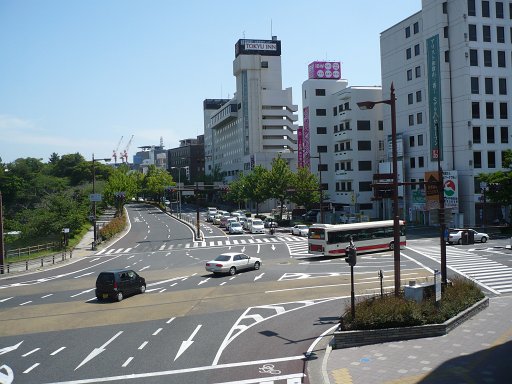
This intersection is on the west edge of the central city in Wakayama City, Japan. The site of a feudal castle and a military target for fire bombing during WWII, Wakayama City today is a quietly busy center of industry.
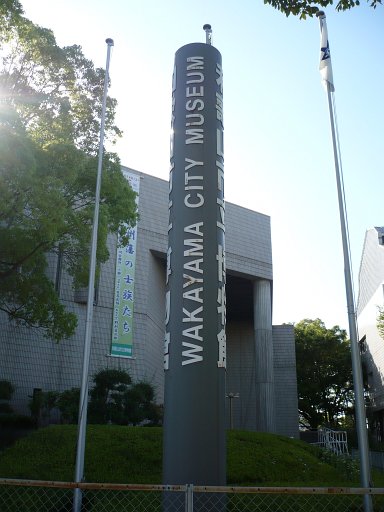
The Wakayama City Museum is an excellent source of historical information.
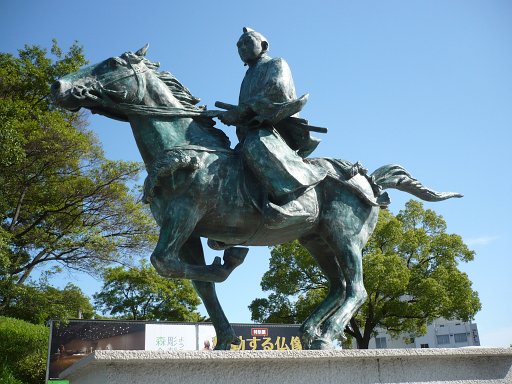
A Samari statue in Wakayama City, Japan.